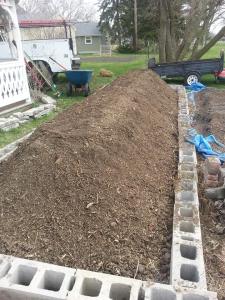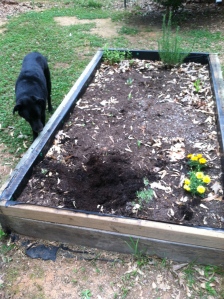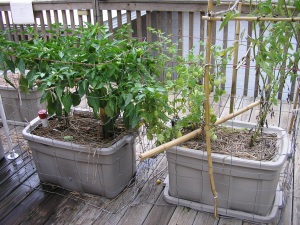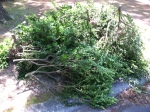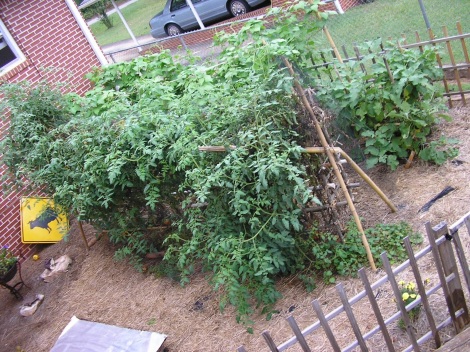by Todd Walker
Bamboo can quickly takes over yards and even entire fields. Though it has many uses world-wide, non-native woody grasses are not our topic of discussion. Today we’ll cover what some describe as the Cherokee Nation’s equivalent to modern plastic… River Cane.
River cane (grass family, Poaceae) is the only native bamboo in the eastern woodlands. Three have been identified: River cane (Arundinaria gigantea), Switch cane (Arundinaria tecta), and a newly discovered (2007) native bamboo called Hill cane (Arundinaria appalachiana). Source
Historical accounts of vast canebrakes stretching for miles along river floodplains were noted by early explorers of the New World. William Bartram, America’s first professional botanist, described clums of river cane “as thick as a mans arm.” John Lawson (1674-1711) recorded that one culm (hollow stem) of river cane could hold “about of pint of liquor.” Cheers!
Without delving into the botanical differences, which would require more space than this article allows, the historical use of cane is well documented as a rich resource for self-reliance. It’s uses are not lost on modern primitive practitioners and experimental archeologists.
Below are three books on primitive skills and technology which have helped me on my journey of experimental archeology and the practice of primitive skills…
I never had the pleasure of personally meeting and learning from Steve Watts but he treated me like a good friend through our online communications. His recent untimely passing spurred me to re-read his book, Practicing Primitive: A Handbook of Aboriginal Skills.
I’m fortunate to have Scott Jones, a student and colleague of Mr. Watts, less than an hour from my Georgia home. I’ve had the pleasure of attending several of his Workshops at the Woods. I have both of his books, A View to the Past, and his most recent work, Postcards to the Past: Context and Continuity in Primitive Technology, gifted to me by my good friend, Kevin Bowen.
My pursuit of primitive technology and skills is largely due to these two authors. Outside the modest cane fishing pole, most of the cane projects within this article come from Watts and Jones.
Though my cane craft is limited, every Georgia country boy I know is intimately familiar with catching blue gill from ponds and creek banks with a homemade cane pole. The use of river cane extends far beyond boys fishing and raising cane on hot summer days. Below I’ve listed 25 traditional uses for this amazing plant.
25 Uses for River Cane in Self-Reliance
Hunting
- Arrow Shafts ~ A preferred material for Southeastern Native American tribes.
- Atlatl and Darts ~ Cane was used to make darts for these spear throwing tool. Jones describes in Postcards from the Past (pg. 193) and has made spear-throwers entirely from cane.
- Knife ~ Some tribes made fire-hardened knives from cane capable of skinning game. I have a deep cut on my knuckle which is finally healing from a brush with sharp river cane.
- Blow Gun ~ Nodes (joints) were removed to form a long, hollow tube of cane to blow darts from. These were effective in hunting small game animals and birds.
Fishing
- Fish Trap ~ The Cherokee used a funnel style trap at an opening of rock dams and weirs in steams to catch fish.
- Split Cane Gig ~ Easy to carve and fire-harden harpoon style gigs for fish or other aquatic species.
- Floats ~ A small clum between both nodes can be used for a line float on a cane pole.
- Jug Fishing ~ Bundle several lengths of cane together with a line and hook attached for passive jug fishing.
Containers
- Baskets ~ Cane was split into splints and woven into baskets for food gathering and storage, clothing storage, ceremonial uses, and day-to-day containers. Natural pigment were used to dye and decorate.
- Mats ~ Woven mats were used for covering walls, floors, bedding, burial, and seating.
- Cane Vial ~ The hollow portion of a clum makes a great container for storing liquid, salt, pepper, medicine, needles, etc.
- Sheaths ~ I traded with James Gibson (Knob Creek Forge) for this handy antler-handled awl with a river cane sheath.
Wildlife
Canebrakes are an ecosystem unto themselves.
- At least 23 mammal species, 16 bird species, four reptile species and seven invertebrates that occur within canebrakes (Platt et al. 2001). Source
- Swainson’s warbler builds it’s nests in dense canebrakes.
- Canebrake Rattlesnake (endangered) live and hunt in canebrakes.
- Whitetail deer eat young shoots in the spring.
Farming
- Food ~ Attractive to many grazing bovine, young cane was the highest yielding native pasture in the Southeast. Indians managed large canebrakes by controlled burning every 7 to 10 years. For humans, boil and eat young shoots in early spring and summer.
- Riparian Buffer ~ Canebrakes improve water quality by filtering ground water nitrates/phosphates, trapping sediment, and stabilizing erosion.
- Tomato Stakes ~ If river cane isn’t abundant in your area, use bamboo instead.
Construction
- Shelter ~ Cane and other flexible saplings were used in wattle-and-daub walled houses.
- Watercraft ~ Bundles of hollow river cane lashed together to form pontoons.
- Pipes ~ Stem for smoke pipes.
- Blow Tube ~ Perfect for making burn and scrap containers and spoons.

A burn and scrap spoon made while camping with Bill Reese (Instinct Survivalist)
- Furniture ~ Chairs, beds, tables, etc.
Crafts
- Paint Brush ~ A short, hollow portion of river cane will accept animal hair or plant fibers to form a brush.
- Jewelry ~ Necklaces, bracelets, and pendants can be made from cane.
- Burnishing Tool ~ Used to burnish leather edges or other craft items.
Music
- Flute ~ A famous poet from Georgia, Sidney Lanier, was also a flutist. It is said that he made his first flute from river cane collected on the Ocmulgee River in central Georgia.
- Whistle ~ Hank at Sensible Survival shows you how to make a simple survival whistle.
We are fortunate to have such a rich native resource growing in our Southeastern woodlands. Efforts are being made to reestablish river cane on land once covered with native bamboo. Keep stewardship in mind when harvesting from canebrakes. Select only what you need without over-harvesting. Non-native bamboo can be substituted for many of these projects mentioned.
In what ways have you used cane for self-reliance?
Keep Doing the Stuff of Self-Reliance,
Todd
P.S. – You can also keep up with the Stuff we’re Doing on Twitter, Pinterest, Google +, YouTube, Instagram, and Facebook… and over at the Doing the Stuff Network.
P.P.S – If you find value in our blog, Dirt Road Girl and I would appreciate your vote on Top Prepper Sites! You can vote daily by clicking here or on the image below. Check out all the other value-adding sites while you’re there… 
Thanks for Sharing the Stuff!
Copyright: Content on this site (unless the work of a third-party) may be shared freely in digital form, in part or whole, for non-commercial use with a link back to this site crediting the author. All links in articles must remain intact as originally posted in order to be republished. If you are interested a third-party article, please contact the author directly for republishing information.


















